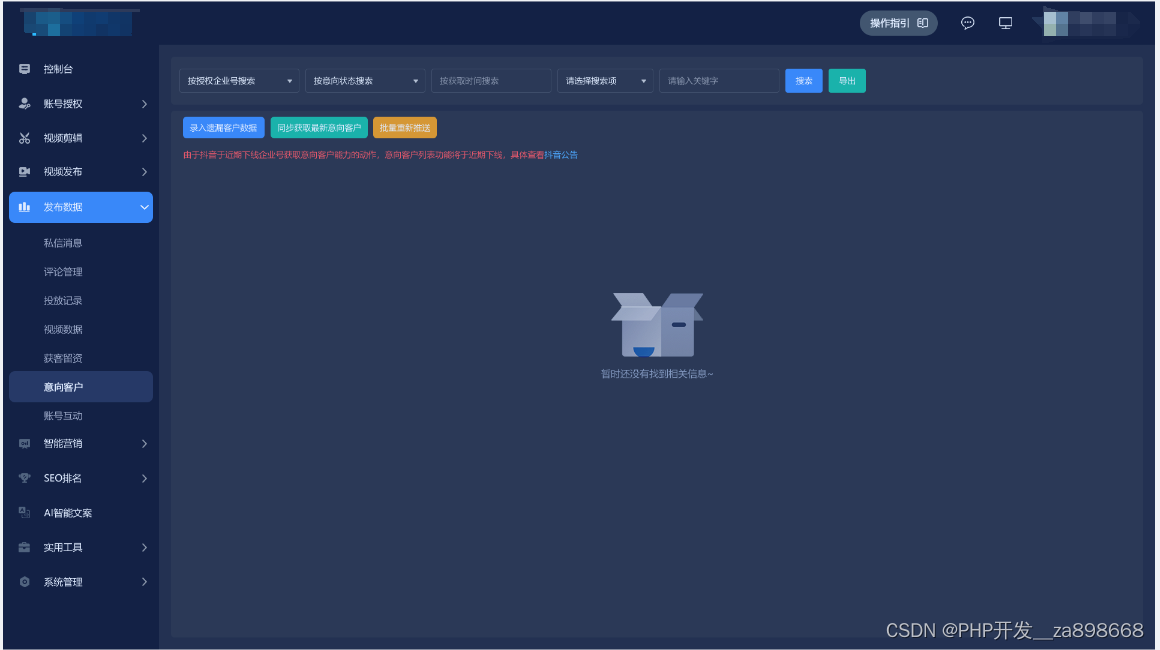### 回答1:
以下是 Java 实现的矩阵运算的源代码:
```java
public class Matrix {
private int rows;
private int columns;
private double[][] data;
public Matrix(int rows, int columns) {
this.rows = rows;
this.columns = columns;
this.data = new double[rows][columns];
}
public Matrix(double[][] data) {
this.rows = data.length;
this.columns = data[0].length;
this.data = new double[rows][columns];
for (int i = 0; i < rows; i++) {
for (int j = 0; j < columns; j++) {
this.data[i][j] = data[i][j];
}
}
}
public int getRows() {
return rows;
}
public int getColumns() {
return columns;
}
public double[][] getData() {
return data;
}
public void set(int row, int column, double value) {
data[row][column] = value;
}
public double get(int row, int column) {
return data[row][column];
}
public Matrix add(Matrix other) {
if (rows != other.rows || columns != other.columns) {
throw new IllegalArgumentException("Matrices must have the same dimensions");
}
Matrix result = new Matrix(rows, columns);
for (int i = 0; i < rows; i++) {
for (int j = 0; j < columns; j++) {
result.set(i, j, data[i][j] + other.get(i, j));
}
}
return result;
}
public Matrix subtract(Matrix other) {
if (rows != other.rows || columns != other.columns) {
throw new IllegalArgumentException("Matrices must have the same dimensions");
}
Matrix result = new Matrix(rows, columns);
for (int i = 0; i < rows; i++) {
for (int j = 0; j < columns; j++) {
result.set(i, j, data[i][j] - other.get(i, j));
}
}
return result;
}
public Matrix multiply(Matrix other) {
if (columns != other.rows) {
throw new IllegalArgumentException("Matrices are not compatible for multiplication");
}
Matrix result = new Matrix(rows, other.columns);
for (int i = 0; i < rows; i++) {
for (int j = 0; j < other.columns; j++) {
double sum = 0;
for (int k = 0; k < columns; k++) {
sum += data[i][k] * other.get(k, j);
}
result.set(i, j, sum);
}
}
return result;
}
public Matrix transpose() {
Matrix result = new Matrix(columns, rows);
for (int i = 0; i < rows; i++) {
for (int j = 0; j < columns; j++) {
result.set(j, i, data[i][j]);
}
}
return result;
}
public void print() {
for (int i = 0; i < rows; i++) {
for (int j = 0; j < columns; j++) {
System.out.print(data[i][j] + " ");
}
System.out.println();
}
}
}
```
这个类包含了矩阵的基本运算,如加法、减法、乘法和转置。可以使用以下代码来测试这个类的功能:
```java
public static void main(String[] args) {
double[][] data1 = {{1, 2, 3}, {4, 5, 6}};
double[][] data2 = {{7, 8}, {9, 10}, {11, 12}};
Matrix matrix1 = new Matrix(data1);
Matrix matrix2 = new Matrix(data2);
Matrix sum = matrix1.add(matrix2);
System.out.println("Sum:");
sum.print();
Matrix difference = matrix1.subtract(matrix2);
System.out.println("Difference:");
difference.print();
Matrix product = matrix1.multiply(matrix2);
System.out.println("Product:");
product.print();
Matrix transpose = matrix1.transpose();
System.out.println("Transpose:");
transpose.print();
}
```
### 回答2:
矩阵运算是在Java编程中常见的操作之一。下面是一个基本的矩阵运算源代码示例:
```java
public class MatrixOperation {
public static void main(String[] args) {
// 定义两个矩阵
int[][] matrix1 = { { 1, 2 }, { 3, 4 } };
int[][] matrix2 = { { 5, 6 }, { 7, 8 } };
// 输出原始矩阵
System.out.println("矩阵1:");
printMatrix(matrix1);
System.out.println("矩阵2:");
printMatrix(matrix2);
// 矩阵加法
int[][] result1 = addMatrix(matrix1, matrix2);
System.out.println("矩阵相加结果:");
printMatrix(result1);
// 矩阵乘法
int[][] result2 = multiplyMatrix(matrix1, matrix2);
System.out.println("矩阵相乘结果:");
printMatrix(result2);
}
// 打印矩阵
public static void printMatrix(int[][] matrix) {
for (int i = 0; i < matrix.length; i++) {
for (int j = 0; j < matrix[0].length; j++) {
System.out.print(matrix[i][j] + " ");
}
System.out.println();
}
}
// 矩阵加法
public static int[][] addMatrix(int[][] matrix1, int[][] matrix2) {
int[][] result = new int[matrix1.length][matrix1[0].length];
for (int i = 0; i < matrix1.length; i++) {
for (int j = 0; j < matrix1[0].length; j++) {
result[i][j] = matrix1[i][j] + matrix2[i][j];
}
}
return result;
}
// 矩阵乘法
public static int[][] multiplyMatrix(int[][] matrix1, int[][] matrix2) {
int m = matrix1.length;
int n = matrix2[0].length;
int[][] result = new int[m][n];
for (int i = 0; i < m; i++) {
for (int j = 0; j < n; j++) {
for (int k = 0; k < matrix1[0].length; k++) {
result[i][j] += matrix1[i][k] * matrix2[k][j];
}
}
}
return result;
}
}
```
通过上述代码,我们可以实现两个矩阵的加法和乘法运算。其中,`addMatrix`方法实现了矩阵加法,`multiplyMatrix`方法实现了矩阵乘法,并通过`printMatrix`方法打印矩阵结果。在`main`方法中,我们定义了两个矩阵,并调用相应的运算方法进行操作,并打印结果。
### 回答3:
矩阵运算是在编程中常见的操作之一,可以使用Java语言编写源代码来进行矩阵运算。下面是一个基本的矩阵运算的示例代码。
```java
public class MatrixOperations {
public static void main(String[] args) {
int[][] matrix1 = {{1, 2, 3}, {4, 5, 6}, {7, 8, 9}};
int[][] matrix2 = {{9, 8, 7}, {6, 5, 4}, {3, 2, 1}};
// 矩阵相加
int[][] sum = addMatrices(matrix1, matrix2);
System.out.println("矩阵相加结果:");
printMatrix(sum);
// 矩阵相乘
int[][] product = multiplyMatrices(matrix1, matrix2);
System.out.println("矩阵相乘结果:");
printMatrix(product);
}
// 矩阵相加
public static int[][] addMatrices(int[][] matrix1, int[][] matrix2) {
int rows = matrix1.length;
int cols = matrix1[0].length;
int[][] result = new int[rows][cols];
for (int i = 0; i < rows; i++) {
for (int j = 0; j < cols; j++) {
result[i][j] = matrix1[i][j] + matrix2[i][j];
}
}
return result;
}
// 矩阵相乘
public static int[][] multiplyMatrices(int[][] matrix1, int[][] matrix2) {
int rows = matrix1.length;
int cols = matrix2[0].length;
int[][] result = new int[rows][cols];
for (int i = 0; i < rows; i++) {
for (int j = 0; j < cols; j++) {
for (int k = 0; k < matrix1[0].length; k++) {
result[i][j] += matrix1[i][k] * matrix2[k][j];
}
}
}
return result;
}
// 打印矩阵
public static void printMatrix(int[][] matrix) {
for (int i = 0; i < matrix.length; i++) {
for (int j = 0; j < matrix[0].length; j++) {
System.out.print(matrix[i][j] + " ");
}
System.out.println();
}
}
}
```
以上代码定义了一个`MatrixOperations`类,其中包含了矩阵相加和矩阵相乘的方法,以及打印矩阵的方法。在`main`方法中,我们创建了两个3x3的矩阵,并分别进行相加和相乘操作,并打印结果。输出结果中显示了矩阵相加和相乘的结果。
希望以上代码能够满足您对于Java矩阵运算源代码的需求。



























 1984
1984











 被折叠的 条评论
为什么被折叠?
被折叠的 条评论
为什么被折叠?








